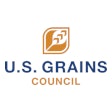
Strong sales continue to Mexico and Canada six months into the 2018/2019 marketing year (September 2018-February 2019), according to data recently released from the U.S. Department of Agriculture (USDA) and analysis by the U.S. Grains Council (USGC).
This year’s sales underpin the importance of the duty-free access provided by the existing North American Free Trade Agreement (NAFTA) and the ongoing efforts to finalize the U.S.-Mexico-Canada Agreement (USMCA).
Mexico remains the top customer for U.S. corn exports at 8.59 million metric tons (338 million bushels) thus far, up 26.3% year-over-year, and the top buyer of U.S. dried distiller's grains with solubles (DDGS) at nearly 978,000 tons thus far in the marketing year. Mexico has also purchased 16.59 million gallons of U.S. ethanol in this marketing year, in addition to significant quantities of sorghum and barley.
Canada continues to rank as the second largest buyer of U.S. ethanol at 159.2 million gallons so far this year, up nearly 5% year-over-year. It is also the sixth largest buyer of U.S. corn at 1.18 million tons (46.5 million bushels) so far, up nearly 77% from the same time the previous year, and the seventh largest buyer of U.S. DDGS at 316,000 tons.
The well-developed North American supply chains and robust market development work by USGC and its members have established this strong export growth, making the USMCA a critical component of maintaining and expanding these top markets.
The U.S. International Trade Commission (ITC) released its economic analysis on the USMCA on April 18, an important step in the procedures required for the approval of the agreement by the U.S. Congress under Trade Promotion Authority (TPA).
The report concluded the USMCA would boost U.S. gross domestic product (GDP) by $68.2 billion and add roughly 176,000 jobs. According to the analysis, the combined effect of all USMCA provisions would increase total U.S. agricultural and food exports by $2.2 billion when fully implemented.
“The ITC report shows how important USMCA will be to maintaining crucial market access for U.S. grain farmers and exporters to Mexico and Canada,” USGC Chairman Jim Stitzlein said. “We look forward to continuing to help expand markets with our long-term business partners and friends in both countries.”
Typically, ITC reports under the TPA process measure the economic impact of new trade agreements. Because the USMCA maintains zero tariffs on U.S. feed grains, co-products and ethanol provided by the North American Free Trade Agreement (NAFTA), the ITC report by itself could not fully capture the full economic benefit of the USMCA. Similar analysis done before NAFTA went into effect also showed likely growth for feed grains, but at a much smaller order of magnitude than the combination of strong trade policy, robust market development and grain markets have created over the past 25 years.
Beyond maintaining duty-free access to the Mexican and Canadian markets, the USMCA also provides the highest enforceable sanitary and phytosanitary standards in any agreement to date, includes an enforceable biotechnology chapter - the first ever in a U.S. trade agreement - and creates a rapid-response mechanism to address trade challenges. Furthermore, the agreement addresses regulatory equivalence, science and risk analysis, transparency and cooperative technical consultations.
These aspects of the agreement are more difficult to quantify, but are significant wins for the agricultural industries in all three countries and pave the way for continued partnerships and trade growth.
Stitzlein testified before the ITC in November 2018 on the importance of the USMCA, saying the pact would remove remaining barriers to grains trade in the region and bolster continued growth in North American markets for commodity grains and value-added grain products like meat and ethanol.
“Trade agreements hold the key to opening markets and resolving tariff and non-tariff barriers to allow movement of coarse grains, co-products in all forms and other agricultural exports where they are demanded,” Stitzlein said in his testimony. “With effective policies in place and followed, trade works and the world wins.”
The next step in the trade promotion authority process is for the Trump Administration to submit to the U.S. Congress a draft Statement of Administrative Action and the final text of the implementing legislation of the agreement, required 30 days before a bill can be formally introduced.

















